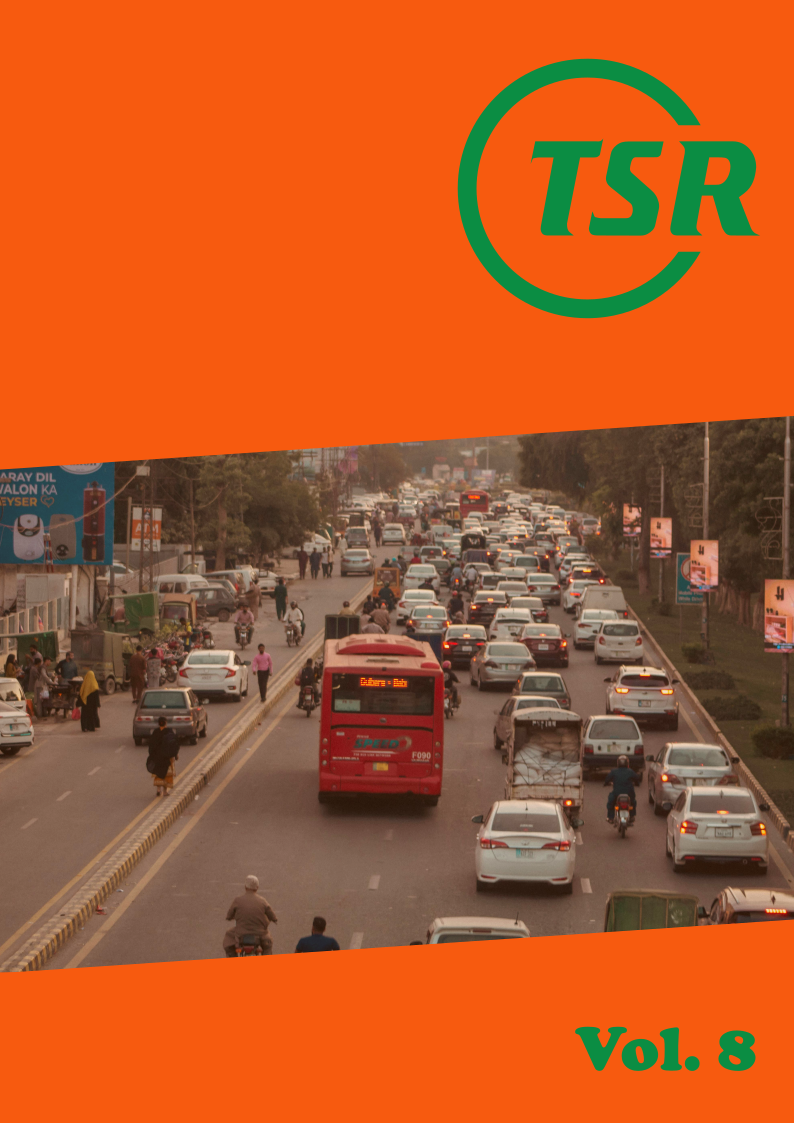The validity of the short driver behaviour questionnaire in varying road users groups in India: age, gender, and driving frequency
DOI:
https://doi.org/10.55329/rffp3251Keywords:
CFA, DBQ, driver behaviour questionnaire, EFA, road safetyAbstract
The Driver Behaviour Questionnaire (DBQ) is a widely used tool for assessing driving behaviours and their implications for road safety. This study examined the factor structure of the DBQ in an Indian context, where cultural and regulatory conditions may shape aberrant driving patterns differently. Data were collected from 1,665 drivers across multiple states through both online and in-person surveys, with 1,657 valid responses retained after outlier removal. The dataset included 28 DBQ items rated on a 5-point Likert scale, along with demographic variables. Exploratory Factor Analysis (EFA) was conducted to explore alternative two-, three-, and four-factor structures, followed by Confirmatory Factor Analysis (CFA) to evaluate the model fit. EFA suggested a two-factor solution as a simpler data-driven representation; however, it demonstrated weak reliability in one factor and a limited ability to distinguish between constructs. In contrast, the four-factor solution not only explained more variance (37.55%) with balanced reliability across factors, but also aligned with theoretical expectations and prior DBQ research. CFA further confirmed the superiority of the four-factor model, which yielded stronger fit indices (χ²/df = 7.601, CFI = .851, RMSEA = .063) and demonstrated measurement invariance across gender, age, and driving frequency. The four factors—Risky and Rule-Violating Behaviours, Safe and Responsible Driving Practices, Driving Errors and Cognitive Lapses, and Distracted and Emotionally Influenced Driving—offer a robust, culturally adapted framework for understanding driver behaviour in India. This validated structure provides a reliable basis for identifying high-risk behaviours and guiding evidence-based road safety interventions.
Downloads
References
Aberg, L., & Rimmo, P.-A. (1998). Dimensions of aberrant driver behaviour. Ergonomics, 41(1), 39–56. DOI: https://doi.org/10.1080/001401398187314
Blockey, P. N., & Hartley, L. R. (1995). Aberrant driving behavior: errors and violations. Ergonomics, 38(9), 1759–1771. DOI: https://doi.org/10.1080/00140139508925225
De Winter, J. C. F., & Dodou, D. (2010). The driver behavior questionnaire as a predictor of accidents: a meta-analysis. Journal of Safety Research, 41(6), 463–470. DOI: https://doi.org/10.1016/j.jsr.2010.10.007
Gabaude, C., Marquie, J.-C., & Obriot-Claudel, F. (2010). Self-regulatory driving behaviour in the elderly: relationships with aberrant driving behaviours and perceived abilities. Le Travail Humain, 73(1), 31–52. DOI: https://doi.org/10.3917/th.731.0031
Gupta, L., Goswami, S., & Kumar, R. (2021). Analysis of driver behaviours towards road safety measures using DBQ in the Indian context. Transactions on Transport Sciences, 12(1), 12–18. DOI: https://doi.org/10.5507/tots.2021.001
Hair, J. F., Black, W. C., Babin, B. J., & Anderson, R. E. (2009). Multivariate Data Analysis (7th ed.). Prentice Hall.
Hussain, Z., Hussain, Q., Soliman, A., Mohammed, S., Mamo, W. G., & Alhajyaseen, W. K. M. (2023). Aberrant driving behaviors as mediators in the relationship between driving anger patterns and crashes among taxi drivers: An investigation in a complex cultural context. Traffic Injury Prevention, 24(5), 393–401. DOI: https://doi.org/10.1080/15389588.2023.2199898
Jadaan, K., Albeetar, N., Abuhalimeh, D., & Naji, Y. (2021). Analysis of driver behavior in Amman using Manchester Driver Behavior Questionnaire. Acta Technica Jaurinensis, 14(4), 440–454. DOI: https://doi.org/10.14513/actatechjaur.00599
Koppel, S., Stephens, A. N., Young, K. L., Hua, P., Chambers, R., & Hassed, C. (2018). What is the relationship between self-reported aberrant driving behaviors, mindfulness, and self-reported crashes and infringements? Traffic Injury Prevention, 19(5), 480–487. DOI: https://doi.org/10.1080/15389588.2018.1440083
Lajunen, T., Parker, D., & Summala, H. (2004). The Manchester Driver Behaviour Questionnaire: A cross-cultural study. Accident Analysis & Prevention, 36(2), 231–238. DOI: https://doi.org/10.1016/S0001-4575(02)00152-5
Lawton, R., Parker, D., Manstead, A. S. R., & Stradling, S. G. (1997). The role of affect in predicting social behaviours: the case of road traffic violations. Journal of Applied Social Psychology, 27, 1258–1276. DOI: https://doi.org/10.1111/j.1559-1816.1997.tb01805.x
Lawton, R., Parker, D., Stradling, S. G., & Manstead, A. S. R. (1997). Predicting road traffic accidents: the role of social deviance and violations. British Journal of Psychology, 88(2), 249–262. DOI: https://doi.org/10.1111/j.2044-8295.1997.tb02633.x
Ledesma, R. D., Montes, S. A., Poo, F. M., & Lopez-Ramon, M. F. (2010). Individual Differences in Driver Inattention: The Attention-Related Driving Errors Scale. Traffic Injury Prevention, 11(2), 142–150. DOI: https://doi.org/10.1080/15389580903497139
Long, S., & Ruosong, C. (2019). Reliability and validity of the Multidimensional Driving Style Inventory in Chinese drivers. Traffic Injury Prevention, 20(2), 152–157. DOI: https://doi.org/10.1080/15389588.2018.1542140
Martinussena, L. M., Hakamies-Blomqvist, L., Moller, M., Ozkan, T., & Lajunen, T. (2013). Age, gender, mileage and the DBQ: The validity of the Driver Behavior Questionnaire in different driver groups. Accident Analysis and Prevention, 52, 228–236. DOI: https://doi.org/10.1016/j.aap.2012.12.036
Ozkan, T., & Lajunen, T. (2005). A new addition to DBQ: Positive Driver Behaviours Scale. Transportation Research Part F: Traffic Psychology and Behaviour, 8(4–5), 355–368. DOI: https://doi.org/10.1016/j.trf.2005.04.018
Ozkan, T., Lajunen, T., & Summala, H. (2006). Driver behaviour questionnaire: a follow-up study. Accident Analysis and Prevention, 38(2), 386–395. DOI: https://doi.org/10.1016/j.aap.2005.10.012
Parker, D., Reason, J. T., Manstead, A. S. R., & Stradling, S. G. (1995). Driving errors, driving violations and accident involvement. Ergonomics, 38(5), 1036–1048. DOI: https://doi.org/10.1080/00140139508925170
Reason, J. T. (1990). Human Errors. Cambridge University Press. DOI: https://doi.org/10.1017/CBO9781139062367
Reason, J. T., Manstead, A. S. R., Stradling, S., Baxter, J. S., & Campbell, K. (1990). Errors and violations on the roads: a real distinction? Ergonomics, 33(10–11), 1315–1332. DOI: https://doi.org/10.1080/00140139008925335
Youssef, D., Salameh, P., Abbas, L., & Rachid Salmi, L. (2023). Examining self-reported aberrant behavior among Lebanese drivers using the Driver Behavior Questionnaire (DBQ). Discover Social Science and Health, 3(25). DOI: https://doi.org/10.1007/s44155-023-00056-y
Published
How to Cite
Issue
Section
License
Copyright (c) 2025 Rahul Kshatriya, Pooja K M, Yogeshwar V Navandar, K Krishnamurthy

This work is licensed under a Creative Commons Attribution 4.0 International License.











